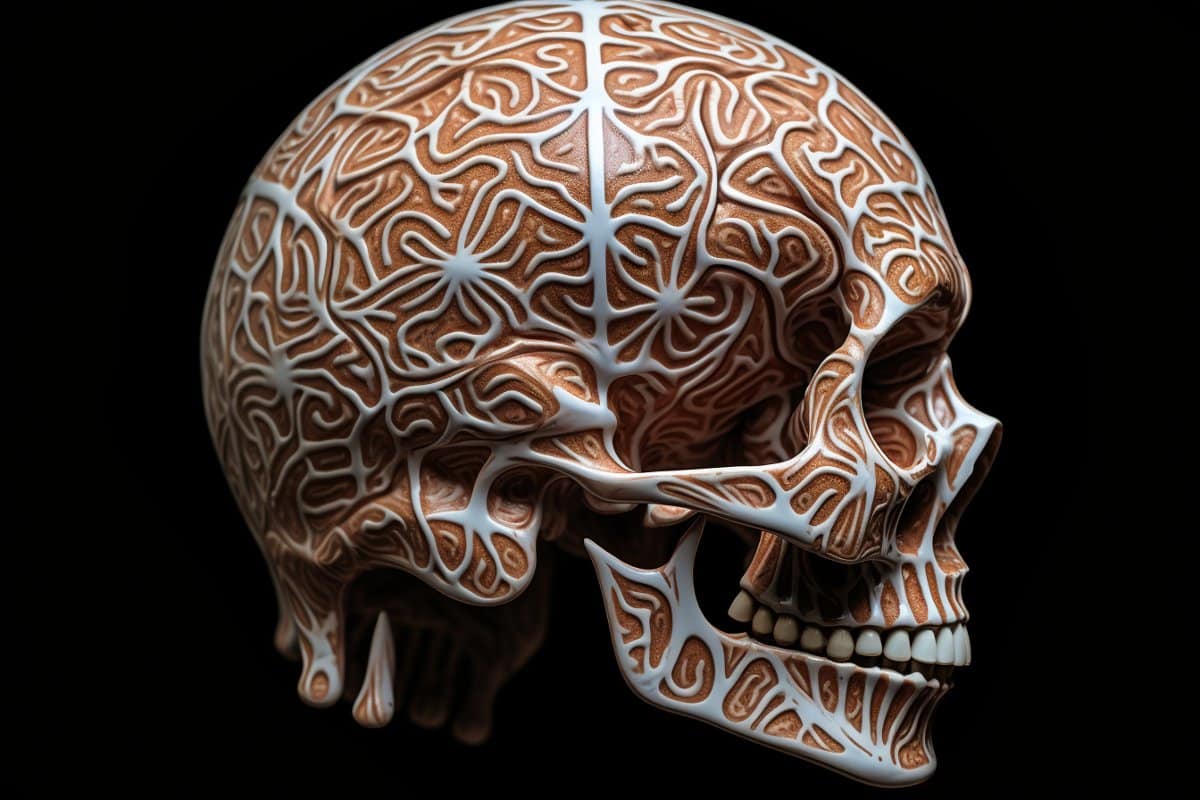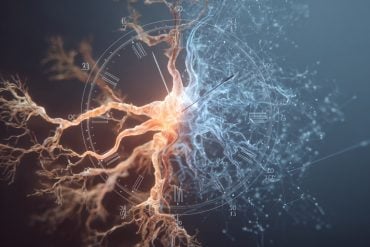Summary: Researchers uncover glioblastoma’s treatment resistance secrets using advanced proteomics. By analyzing tumor proteins and their modifications, the team discovered that glioblastoma cells transform into neuron-like states to resist initial therapies.
This groundbreaking approach identified the kinase BRAF as a potential target, leading to successful tests of a BRAF inhibitor in mice models. The research paves the way for precision therapies against glioblastoma and other resistant cancers.
Key Facts:
- Glioblastoma cells transition to neuron-like states to evade treatment, mimicking normal brain cells.
- Proteomics analysis led to the identification of the kinase BRAF as a potential target.
- A BRAF inhibitor, vemurafenib, showed promise in knocking down treatment-resistant glioblastoma cells.
Source: University of Miami
Certain cancers are more difficult to treat because they contain cells that are highly skilled at evading drugs or our immune systems by disguising themselves as healthy cells.
Glioblastoma, for example, an incurable brain cancer, is characterized by cells that can mimic human neurons, even growing axons and making active connections with healthy brain neurons. This cancer is usually deadly – average survival time is just over one year from diagnosis – because it almost always recurs after initial treatment and recurrent tumors are always resistant to therapy.

But now, a new study by researchers at Sylvester Comprehensive Cancer Center at the University of Miami Miller School of Medicine and collaborating organizations provides insight into this neuron mimicry and potential therapies to prevent treatment resistance. Their work appears Jan. 11 in the journal Cancer Cell.
“Our findings were made possible by a unique approach to studying glioblastoma,” explained Antonio Iavarone, M.D., deputy director at Sylvester who led the study with Jong Bae Park, Ph.D., of the National Cancer Center in Korea. Iavarone noted that they used a platform designed to study glioblastoma cells’ full set of proteins, also known as the proteome, and certain modifications on those proteins indicating enzyme activity in cells.
“These platforms can provide a landscape of alterations in individual tumors that you cannot get from genetics alone,” he added.
Largest dataset to date
The research team assembled what became the largest dataset of its kind, featuring matched tumor samples from 123 glioblastoma patients both at diagnosis and then recurrence after initial therapy. By studying the tumors’ proteomes and protein modifications in the samples, researchers were able to detect important changes not previously seen in similar cancer studies that examined the tumors’ genomes or transcriptomes, the set of RNA molecules in cancer cells.
This study represents the first time scientists have used proteomics to study glioblastoma’s transition from treatable to treatment-resistant, according to the researchers. By looking at cancer proteins and their modifications, namely a specific modification known as phosphorylation, they demonstrated that before treatment, glioblastoma cells were in a proliferative state where the cells expend energy toward replicating themselves.
Many chemotherapies work by targeting the cell functions in self-replication, as cancer cells typically grow faster than healthy cells. But once tumors recurred in glioblastoma patients months later, the cells looked very different – and more like healthy neurons.
The researchers asserted that there is something about this replication-to-neuronal transition that helps cancer cells evade being killed by the initial glioblastoma treatment, usually a combination of chemotherapy, radiation and surgery.
“The tumor cells actually resemble normal brain cells,” said Simona Migliozzi, Ph.D., an assistant scientist at Sylvester and one of the study’s lead authors. “Why? Because tumor cells want to survive, they want to live, and they’re able to acquire therapy resistance by mimicking the normal brain.”
Finding glioblastoma weaknesses
The authors then used their new dataset to identify potential therapies that could kill these resistant cancers, focusing on enzymes known as kinases that are responsible for phosphorylating other proteins. Migliozzi and colleagues deployed a machine-learning approach they had developed previously to find the most active kinases in the neuron-like glioblastomas. Kinases are important for many different cellular functions and are key targets for many FDA-approved cancer drugs.
One kinase stood out: BRAF. Gene encoding for this kinase is commonly mutated in some cancers, including melanoma, but in glioblastoma, BRAF protein levels increase without corresponding gene changes. The researchers would not have made this important discovery without examining the cancer proteome.
They then tested an existing BRAF inhibitor, vemurafenib, on treatment-resistant glioblastoma cells in a petri dish and a patient-derived xenograft tumor in mice. In both cases, the drug, used in combination with the chemotherapy drug temozolomide, knocked down the formerly resistant tumors. In the mouse model, the BRAF inhibitor extended the animals’ survival over chemotherapy alone.
Future plans
Iavarone believes their artificial-intelligence algorithm to predict glioblastoma’s most active kinase can be applied to other cancer types. He and his researchers are working to develop a clinical test that would use AI to identify therapeutic weaknesses in a variety of cancers by finding each tumor’s most active kinase and treating it with an existing kinase inhibitor.
Presently, Iavarone and colleagues are discussing plans for a clinical trial testing vemurafenib or another BRAF inhibitor drug for glioblastoma. They plan to treat trial patients with the inhibitor from the start to prevent the cancers from transitioning to the resistant state.
“Proteomics give us a much more direct prediction of protein activity,” Iavarone said. “We hope this analysis can be seamlessly translated into the clinic as a next-generation precision therapy for this very challenging disease and other resistant cancers as well.”
About this brain cancer research news
Author: Sandy Van
Source: University of Miami
Contact: Sandy Van – University of Miami
Image: The image is credited to Neuroscience News
Original Research: The findings will appear in Cancer Cell






